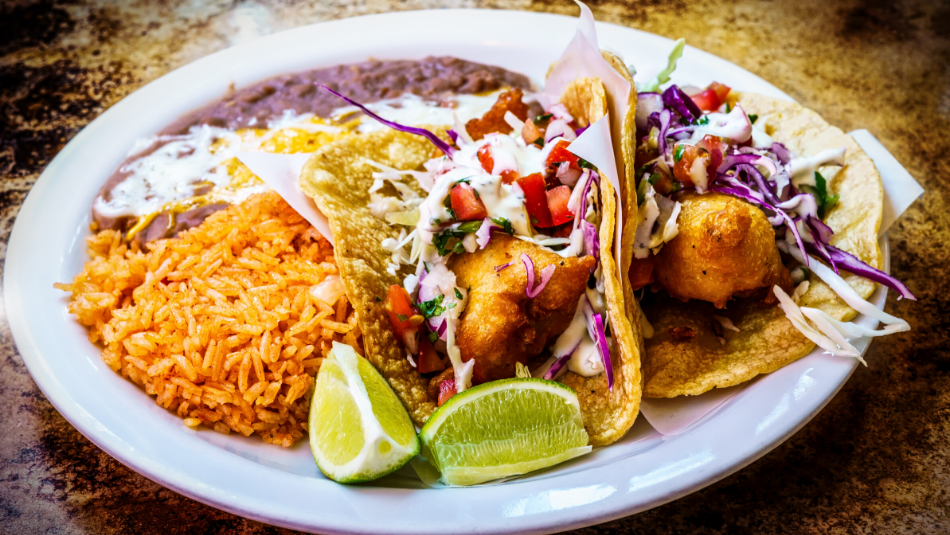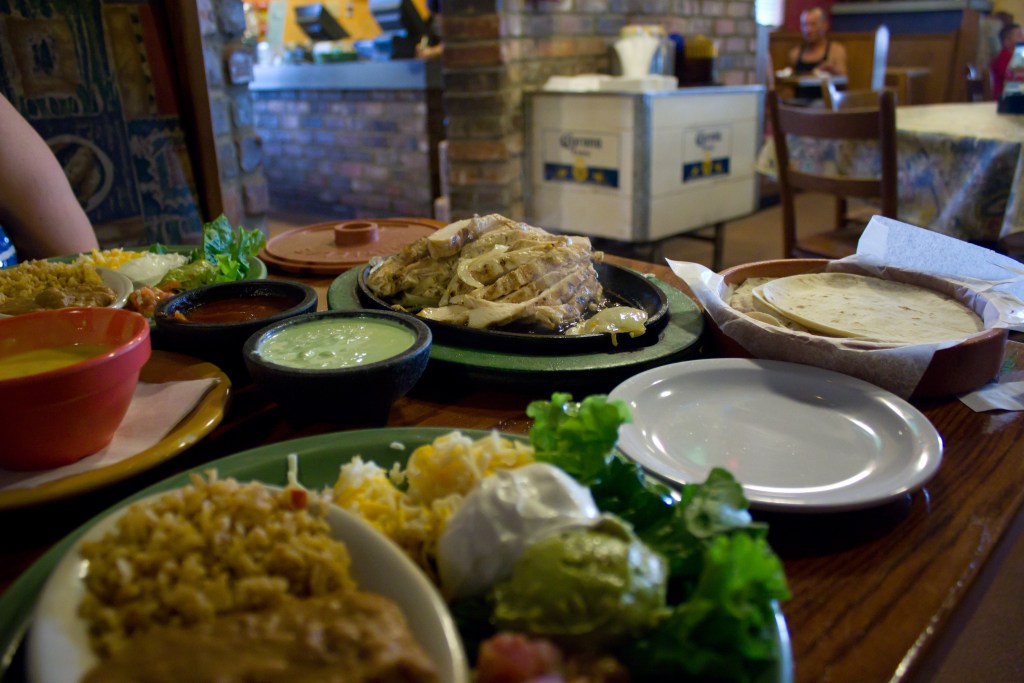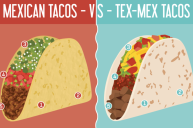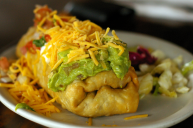Chances are, if you eat out a lot, that at least once a week someone in your family or group of friends suggests going out for Mexican. In most parts of the country, though, what they really mean is Tex-Mex. Good Tex-Mex food is a beautiful thing, but there is a difference between Tex-Mex and Mexican food; it's a distinct style of cuisine from authentic Mexican food.
Videos by Wide Open Country
In 1972, Diana Kennedy published a cookbook titled "The Cuisines of Mexico" based on her years living in Mexico City and time teaching Mexican cooking classes in New York City. She detailed the different regional styles of traditional Mexican food in an effort to show that what most Americans considered "Mexican" food was something different.
Tex-Mex as a term started to show up around the 1940s, but Tex-Mex as a style of cuisine has its roots in 19th century San Antonio. While some kind of meat stew has been around since humans first figured out cooking, chili con carne came into being in Texas some time in the 1800s. Chili stands were popular in several Texas cities, including Houston and Galveston, but it was the San Antonio Chili Queens that made chili con carne the bedrock of Tex-Mex cuisine.
Chili is the mother of all Tex-Mex dishes. Early Texans used the ingredients that were readily available, which is why chili is beef-based. Like chili, other Tex-Mex dishes combined south-of-the-border influences with more common ingredients for to create something new.
The difference between Tex-Mex and Mexican food is found in the use of four key ingredients, all things available to the local cooks who created Tex-Mex cooking.
The Difference Between Tex-Mex and Mexican Food Ingredients
Cheese
https://www.instagram.com/p/CCjuIa8p2zD/
Tex-Mex is all about the cheese. Great globs of yellow cheese in and on everything and then another dish of it on the side to dip things in. Mexican cuisine uses far less cheese in any given dish, and it's almost always a white cheese instead of the yellow cheese used in Tex-Mex dishes.
Cheese is rarely a main ingredient in Mexican food, but in Tex-Mex you have cheese enchiladas (shredded yellow cheese wrapped in a tortilla, usually with some kind of cheese top as well).
Queso dip (that most excellent of cheese-based dips) is entirely Tex-Mex in origin. Created in Arkansas at Tex-Mex chain Mexico Chiquito in 1935 (yes, my Texas friends, I went there), queso isn't something you find on a traditional Mexican menu. Though you may find it on the menu in American restaurants that serve traditional Mexican dishes, it's almost always because customers are upset when they don't see it.
Cumin
Next to chili peppers, the seasoning people tend to reach for the most when they cook "Mexican" food is cumin. But cumin isn't a traditional Mexican spice. It came to North America with people from the Canary Islands who were brought here by the Spanish to work in their San Antonio-area settlements. Cumin was used in San Antonio chili con carne, another thing that set that dish apart from what you find south of the border.
In the 1890s, cumin's place in the Tex-Mex spice pantheon was solidified by a German immigrant living in San Antonio. Willie Gebhardt created a mix of dried chili powder that included cumin, ancho chilies, oregano, and black pepper. Gebhardt Eagle Chili Powder became the standard for chili powder and cumin moved from chili con carne to other Tex-Mex dishes.
Tortillas
Traditional Mexican tortillas are made of corn. It wasn't until the tortilla migrated north of the Rio Grande that wheat flour was widely used to make tortillas. In Mexican cuisine, tortillas can be used as a wrap (as in a burrito or soft taco), but it's also used in the same style that Americans might use a piece of bread on the side of the plate.
While the origins of the burrito aren't clear — there's some evidence that it was first made in the northern Mexican state of Chihuahua, though the first mention of it comes from a restaurant near Tucson, Arizona — the giant flour tortillas that are used to contain massive amounts of filling today are most definitely considered Tex-Mex.
The corn tortilla does hold an important place in American cuisine, though. The hard taco shell uses it to turn a classic Mexican food into a Tex-Mex version of street food. In Mexico, if you say taco, it's always a soft shell. According to The Kitchn, a couple of restaurants in Texas could claim ownership of the hard shell taco concept, but it was no less than Glen Bell, founder of Taco Bell, that bring it into our national cuisine.
Beef
Beef fajitas, beef tacos, beef chili - all these dishes are solidly Tex-Mex. Traditional Mexican dishes tend toward the use of pork and chicken or seafood in coastal regions, but because Texas was a cattle-heavy area, beef was more available for use in cooking (that's also why Texas barbecue is beef and not the pork of states farther east). You do find more beef used in northern Mexico, closer to Texas.
Ground beef in a hard shell taco is a staple of Tex-Mex cooking, made most famous by Taco Bell. And beef fajitas are traditional at most Tex-Mex restaurants. The name "fajitas" was first used in print in 1971. While you can get fajitas today with other kinds of meat or seafood, the word fajita comes from the Spanish word "faja" meaning "strip" (as in the cut of beef used).
Traditional Tex-Mex Dishes
All these ingredients combined with unique American qualities to create a distinct new cuisine. Many of the items you find on the menu at your local Mexican restaurant fall into the Tex-Mex category. It's true for quesadillas, burritos, and nachos. That's right: Nachos are excellent, but they are definitely not a traditional Mexican food.
Another difference between Tex-Mex and Mexican food is the type of sauce used on a dish. A cheese, cream, or red sauce is almost always Tex-Mex, while a green sauce or mole is almost always Mexican.
Condiments are another difference. Sour cream is a Tex-Mex staple, but Mexican dishes use a crema that's more like creme fraiche.
Celebrate Tex-Mex Cuisine
While individual Tex-Mex dishes may have developed as Americanized versions of Mexican food, Tex-Mex as a cuisine has a solid foundation in the Texas and the American Southwest. Even with influences from our neighbor to the south, Tex-Mex has its own history that can be traced to a specific time and place, making it a distinct cuisine.
And that's a wonderful thing. There may be a difference between Tex-Mex and Mexican food, but our kitchens are big enough for both of them, and I for one am happy to eat Mexican or "Mexican" any night of the week.
This article was originally published on July 12, 2019.





